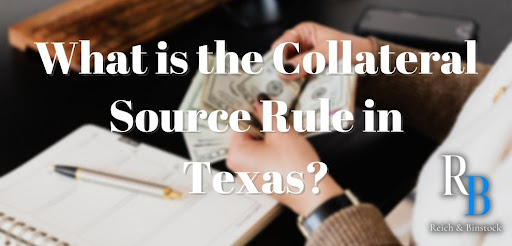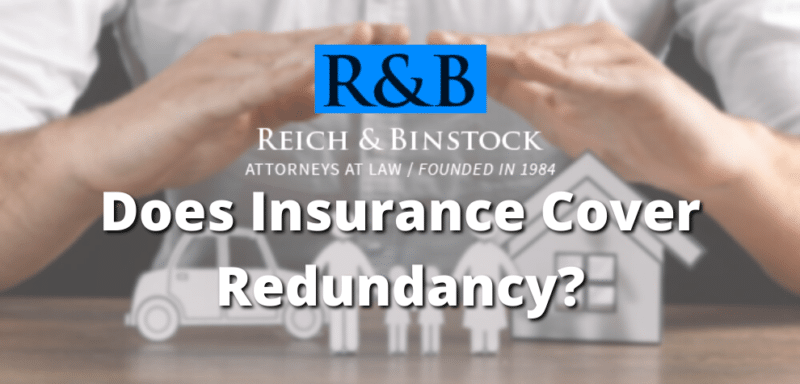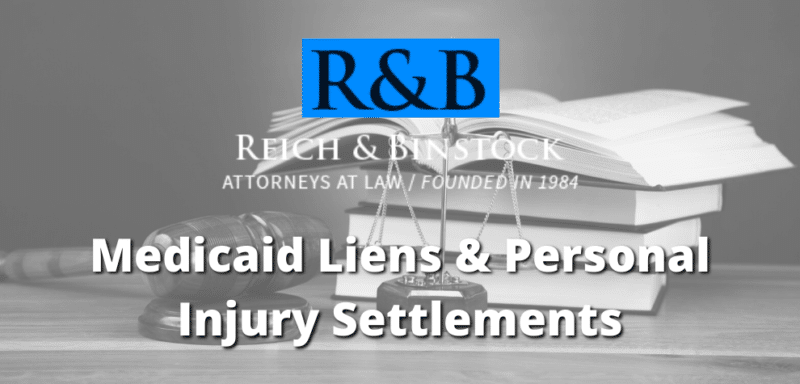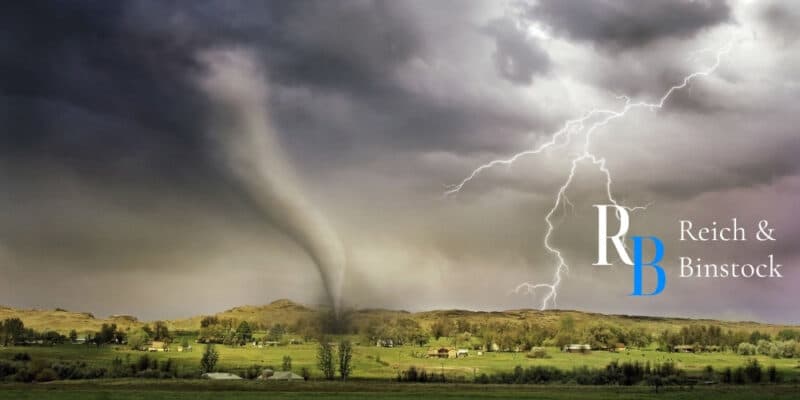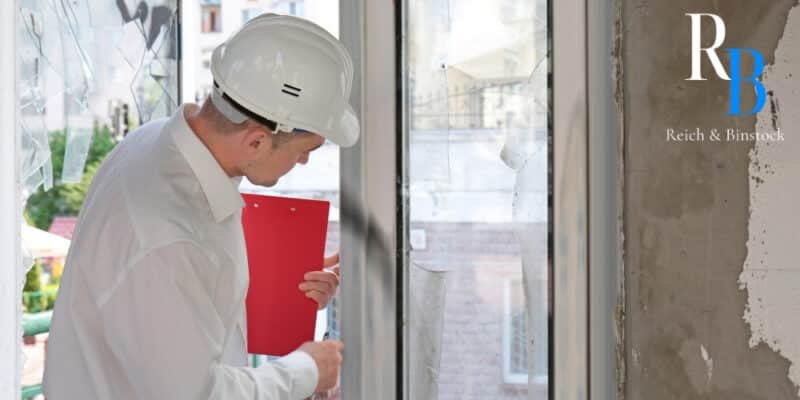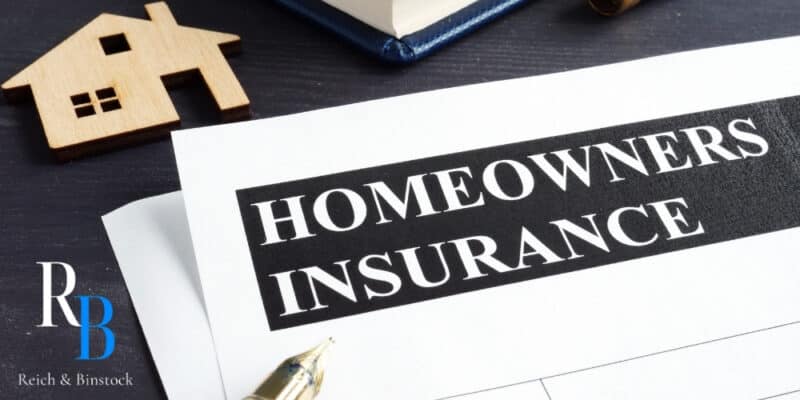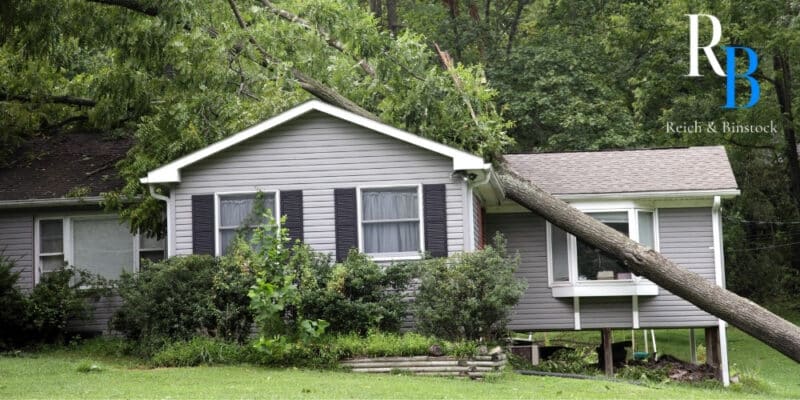Tornado Damage Insurance Claims Lawyer
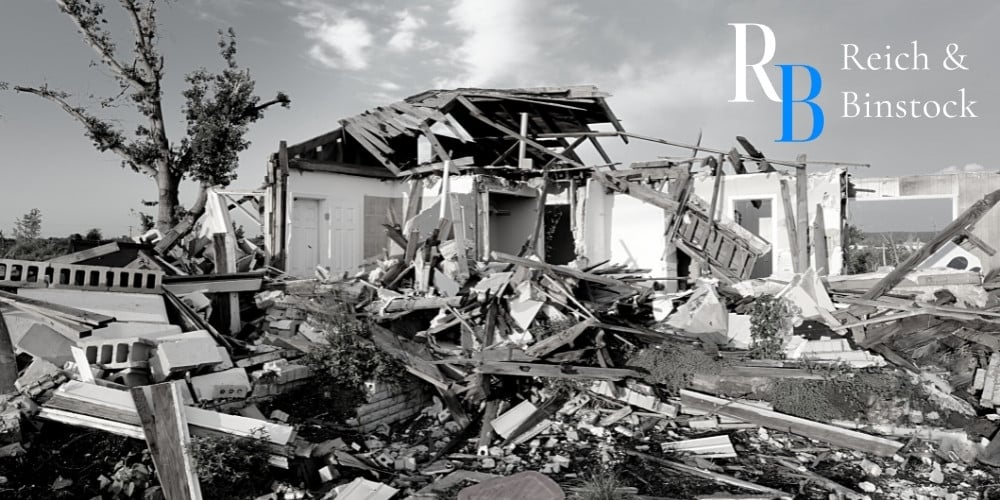
In the state of Texas alone, an average of around 132 tornadoes touch down each year. Although the number of tornado-related deaths is thankfully low in most cases, the amount of property damage caused by tornadoes is often significant. In fact, the United States suffers billions of dollars in tornado damage each year, even though most tornadoes are considered “weak.” However, many people find financial relief for their losses after they file tornado insurance claims. Obtaining a claim settlement can be the difference between fully repairing your home and falling into a perilous financial situation. But what happens when the insurance company wrongfully denies your insurance claim?
At Reich & Binstock, our insurance lawyers have extensive experience helping homeowners navigate the complicated claims process after their home suffers extensive storm damage. We understand that, after a tornado, you’re likely to be shaken up. Having to deal with your insurance company and the insurance adjuster they send can cause an unnecessary amount of stress, especially after a denial of your claim. Don’t take on greedy insurance companies alone. Contact Reich & Binstock for a free evaluation of your case at 713-622-7271.
Other insurance claims we handle include the following.
How Is Tornado Strength Measured?
Since 2007, meteorologists have used the Enhanced Fujita Scale (EF Scale) in order to assign ratings to tornadoes. This rating comes from estimated wind speed and related damage. Scientists survey tornado damage according to a list of Damage Indicators (DI) and a list of Degrees of Damage (DoD). These lists help form estimates of wind speed ranges for tornadoes. Then, they assign a rating from EF0 to EF5. We’ll explain each of these categories in more detail below.
What Is the Enhanced Fujita Scale (EF Scale)?
The Enhanced Fujita Scale, originally developed by Dr. Tetsuya Theodore Fujita as the Fujita Scale, helps meteorologists assign ratings to tornadoes. The EF Scale was adapted from the original F scale by a forum of recognized wind engineers and meteorologists. It takes many variables into account when assigning ratings, which allows experts to more accurately record tornado damage. Below, we outline the parameters of each tornado rating on the EF Scale.
EF-0 Tornado
An EF-0 produces minor damage. (65-85 mph wind speeds) Some shingles may be blown off of roofs, portions of a roof may peel up, and siding/gutters may sustain damage. Trees with shallow roots may uproot, and branches may break off of trees.
EF-1 Tornado
An EF-1 produces moderate damage. (86-110 mph wind speeds) Roofs sustain more significant damage, and windows may break. Outside doors may sustain damage or blow away, and some mobile homes may turn over.
EF-2 Tornado
An EF-2 produces considerable damage. (111-135 mph wind speeds) Well-constructed homes may have their roofs torn off. They may shift off their foundations. Mobile homes may be completely destroyed. Large trees may uproot or snap in two. It is possible for cars to be tossed.
EF-3 Tornado
An EF-3 produces severe damage. (136-165 mph wind speeds) It may destroy entire floors of homes and do significant damage to large buildings. A home with a weak foundation may be blown away completely. Trees have their bark ripped off.
EF-4 Tornado
An EF-4 produces extreme damage. (166-200 mph wind speeds) These storms can level well-constructed homes, throw cars great distances, and collapse the exterior walls of brick buildings.
EF-5 Tornado
An EF-5 produces massive or incredible damage. (>200 mph wind speeds) These storms sweep away well-constructed homes, badly damage buildings that are concrete and steel-reinforced, and cause structural damage to high-rise buildings. Trees may be completely debarked, snapped, and even stripped of their branches.
How to Evaluate Tornado Damage
After your home sustains wind damage from a tornado, it’s important that you understand how to assess that damage for your insurance claim. Below, we offer a few tips on how to assess the tornado damage that your property suffered.
- Stay safe while assessing the windstorm damage. Wait until the wind has completely stopped before inspecting your personal property damage. Also, be sure to avoid any fallen trees or power lines. Pay close attention to any gas smells, and leave the area if you detect it. Watch out for sharp or broken objects.
- Take photos and videos of the damage. Some of the most important angles are the exterior photos of the home. Photograph all sides of the home, as well as the surrounding properties.
- Carefully inspect the exterior. Look at the roof from the ground at first, then with a ladder, if the home is stable enough. Check your gutters, siding, deck, or porch. Take note of any of the following kinds of structural damage that you find.
- Broken windows
- Gaps around door frames or window frames
- Cracked or leaning chimneys
- Gaps between portions of the home, such as porches or stairs
- Cracks in bricks, mortar, or stairs
- Bent roofline
- Carefully inspect the interior. Even if the exterior of the home sustains no damage, it is still possible to find damage within the home. Look for the following signs of structural damage inside your home.
- Popped nails
- Doors or windows that are stuck
- Cracks in drywall or plaster
- Gaps between the floors and walls
- Warped or bent walls
- Slanting floors
- Make necessary repairs and prevent further damage to the home.
- Call your insurance company to see what your homeowners’ insurance policy covers.
- Hire an insurance lawyer if your insurance company wrongfully denies your claim.
Common Types of Tornado Damage
Tornadoes can cause many different types of damage to homes and businesses. This is why it’s so important for property owners to understand if their insurance policy will cover tornado damage. After a strong windstorm, the following types of damage are common to see.
- Missing shingles
- A fallen tree or power line
- Spoiled food from a loss of power
- Roof damage
- Broken windows and sliding glass doors
- Bent or broken garage doors
- Siding damage
How Does a Tornado Damage Insurance Claim Work?
Many homeowners expect that their homeowners’ insurance policy will cover the storm damage sustained in a tornado. While most standard homeowners insurance policies generally cover wind damage, not all of them do. If your insurance policy does cover tornado damage, you’ll likely find it under the dwelling coverage portion.
Tornadoes and windstorms occur more often in certain parts of the country than in others. In order to maximize profits, the insurance industry often excludes certain coverages in areas where those types of damages are common. Your home insurance policy may not cover tornado damages if you live in an area that is prone to them.
When your home sustains significant wind damage, you’ll likely need to file a claim in order to make repairs. Your claim will fall under the dwelling coverage or personal property coverage portion of your policy. Dwelling coverage will help cover the costs of rebuilding or repairing your home. Personal property coverage pays for the repair or replacement of items within your home.
If windstorm damage is not one of the insured losses under your policy, you may need to purchase a supplemental policy to be protected.
Does Homeowners Insurance Cover Tornadoes?
Most standard insurance policies cover tornado and windstorm damage. If this is the case for your policy, you can begin the claims process. Be sure that you understand your coverage limits before you file a claim with your insurance carrier. It’s also important that you understand how they will compensate for your losses. We’ll outline the two most popular methods of compensation in the next section.
How Do Homeowners’ Insurance Policies Cover Tornado Damage?
Check your policy to determine how your insurance company intends to compensate for your tornado damages. Below, we outline the two most popular compensation methods.
- Actual Cash Value (ACV): This pays for the actual value of the contents you lost minus the depreciation of those contents. For example, maybe you paid $1000 for a nice television two years ago. Your insurance company may only offer you $500 or less due to the television’s depreciation over the last two years.
- Replacement Cost Coverage: Your insurance company will pay to replace your damaged items with items of similar quality. The tradeoff between the two is that replacement cost coverage policies often cost more than ACV policies.
Is There a Separate Deductible for Tornado Claims?
No, not if you have a standard homeowners insurance policy that covers damage caused by tornadoes and wind. However, if your policy does not cover wind damage, you may have a separate deductible.
Also, while many deductibles involve paying flat fees, storm deductibles are often set at a percentage of your home’s policy limit. For example, let’s say your home is insured for $400,000. If your deductible is 3% of your coverage limit, then you would have to pay $12,000 before your insurance covers the rest.
What About Tornado Property Damage from Trees?
Tornadoes and windstorms often cause damage to many trees, both large and small. If a tree fell on your property and caused damage, you may want to check your policy to see if you’re covered for fallen tree damage. Your insurance company should cover the damage if they determine that the tree fell on your property because of the wind. However, they’re likely to chalk it up to a maintenance-related issue if the tree was already damaged or rotting before the storm.
What About Living Expenses if a Tornado Displaces Me from My Home?
This is a common concern for many homeowners after a storm or other covered peril displaces them from their homes. Maybe their home needs extensive repairs in order to be habitable, or maybe it was completely destroyed. Either way, you need somewhere to stay, and that means you’re taking on additional living expenses.
Luckily, most home insurance policies will cover additional living expenses (ALE) while you cannot live in your home. Usually, you can receive compensation for rent, hotel room costs, storage space costs, food, and even more. However, this form of coverage usually does not apply to damage caused by flooding. If you do not have flood insurance, you can attempt to secure coverage from the National Flood Insurance Program (NFIP).
Does Car Insurance Cover Tornadoes?
This depends on the kind of car insurance you have. If you have comprehensive coverage for your vehicle, this will shield you from expenses related to damage from hail, flooding, lightning, wind, and storms. It is likely that damage to your vehicle will be covered if you have comprehensive car insurance.
How Do I File a Tornado Insurance Claim?
Those who have never tackled filing a major claim before may feel overwhelmed at the thought of speaking with an insurance adjuster by themselves. This is often multiplied after a major storm, which can make it difficult to concentrate on filing a claim. What’s more, is that many insurance companies care more about maximizing their own profits than they do about taking care of their policyholders.
One way to ensure that you take all necessary steps while filing your claim is to work with an insurance attorney who has handled major property damage cases. At Reich & Binstock, we will work with you throughout every step of your homeowners’ insurance claim. Below, we outline a brief overview of the process.
- Contact your insurance provider. Find out what your policy does and doesn’t cover. Ask about how long you have to file a claim, as well as how long a claim may take.
- Ask about your Additional Living Expense coverage if your home sustained extensive damage.
- Properly fill out all claim forms. Working closely with an attorney can ensure that your forms are completely and accurately filled out before sending them back to your insurer.
- Have a public adjuster come to your home to assess the damage. Although the insurance company will probably send an adjuster, public adjusters operate with much less bias and may give you a more accurate estimate.
- Prepare for the public adjuster or the adjuster from your insurer. Document damages thoroughly so that you may easily point them out to the adjuster. Show them that you have taken reasonable steps to prevent further damage to your home. Also, if you have a home inventory, it would be wise to give the adjuster a copy.
- Be able to substantiate or prove your losses. We recommend making a thorough list that you can give to the adjuster, along with copies of receipts and other necessary evidence.
Contact an Insurance Claims Lawyer with Reich & Binstock Today
At Reich & Binstock, we understand how devastating tornadoes and windstorms can be. That’s why our attorneys are dedicated to ensuring that any tornado damage caused to your home or property is fairly compensated by your insurance provider. We have extensive experience handling property damage claims arising from many disasters, including tornadoes. If your home or personal property suffers tornado damage, we will fight to get you the maximum amount possible for your claim. To schedule a free consultation with us, please call 713-622-7271 today.
There is a never a fee unless we recover on your behalf.













